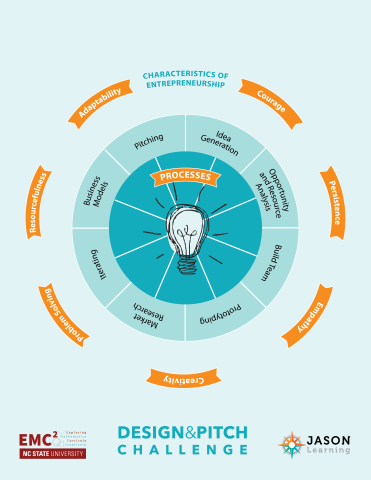Body
Image

Shark Tank for Math Learning
The D&P Challenges in STEM is a novel curricular form that combines features of project-based learning (PBL), design-based learning (DBL), and entrepreneurial-based learning (EBL) within entrepreneurial pitch competitions. Given the growing appeal of entrepreneurship and the often integral role of STEM in entrepreneurial innovation, situating STEM instruction within entrepreneurship could be an effective means for increasing students’ interest and engagement in STEM, while also supporting rich STEM learning, especially in mathematics. The purpose of this research is to 1) adapt the middle grades-focused D&P curricular form for use in high school by designing nine new entrepreneurial challenges rich in high school STEM content; 2) examine the effects of these materials on high school students’ STEM career interest and learning, especially with respect to mathematics; and 3) examine the impact of participation in an online professional learning network on teachers’ implementation of the challenges.
Pillar 1: Innovative Use of Technologies in Learning and Teaching
As students engage in Design & Pitch Challenges they utilize various technologies for the learning of rich mathematics content. These include, but are not limited to: spreadsheets, TinkerCad, Desmos, GeoGebra, and Datawrapper.
Pillar 2: Partnerships for Career and Workforce Preparation.
Entrepreneurship and the D&P Challenges in STEM offer a solution to STEM workforce development by exposing students to opportunities for using STEM to develop innovative solutions to socially, personally, and culturally relevant problems. Additionally, through identifying diverse challenge champions and entrepreneurial mentors, the D&P Challenges give students, especially those students who are from populations underrepresented in the STEM workforce, access to careers they may not have previously considered.
Pillar 3: Strategies for Equity in STEM Education
D&P is pioneering a new curricular form for high schoolers that leverages entrepreneurship to 1) increase students’ engagement and learning in STEM, 2) integrate flexible and inclusive STEM career connections, and 3) broaden participation in STEM fields and careers, particularly for rural and female students and students of color.

Discipline(s)
Mathematical sciences
Target Gradespan(s)
High school (9-12)
Target Participant(s)
Youth / students
Educators
Girls (or women)
Black/African American participants
Hispanic/Latino participants
Project Setting(s)
Formal Education
Informal Education
Category
Developing and Testing Innovations (DTI)